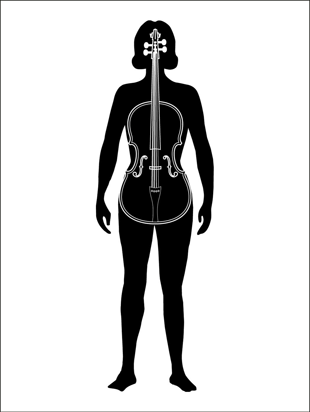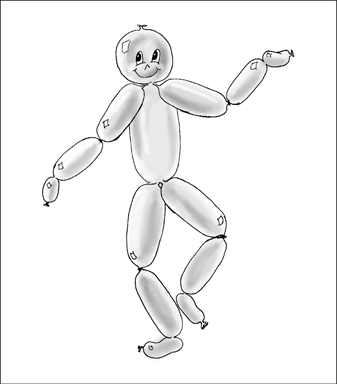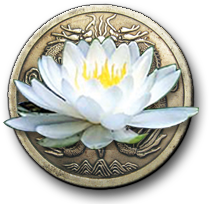In every practitioners life, there is a progression of understanding as more difficult cases present themselves. This is a driving force for the ongoing introspection which propels most doctors and practitioners into developing new techniques or modifying existing ones.
Thomas Ambrose Bowen, 1916-1982, practiced for 30 years in a profession for which he was formally unqualified. He was a naturally gifted, self-taught, Australian osteopath who developed his own special technique which has helped thousands cope with a wide range of injury, illness, and disability. He was also considered gruff, and had a low tolerance for fools. During his career, he apprenticed nine individuals, six as serious long term students. As time passed, those individuals who studied with him toward the end of his career had a greater depth and width to their knowledge of his work.
His brightest students, who observed and worked with him for years, were politely informed that they had about 10-15% of what he knew. Perhaps a disconcerting thing to know, but he reassured them that when they needed it, the rest would come. After his death, those who did compare notes were astonished by how differently they were taught, although common threads (principles) certainly ran through each one’s practice. It isn’t necessary to understand the theory of Bowen’s work in order to have success. Many lay people have success by following directions, following their intuition, and following their fingers. Mr. Bowen operated without the technical background or vocabulary that is part of classical training. Although he couldn’t articulate his understanding in standard anatomical terms doesn’t mean he didn’t have that understanding.
Professionals today are utilizing Bowen’s work to bring expanded dimensions to their previous training and modalities. Whether one should change another’s work is not the focus of this article. Instead, let the results achieved in one’s practice determine the willingness to adjust or modify an already powerful treatment. Those who stray too far from the Bowen principles may find it difficult to determine what results are achieved by which modality; those who lean on fixed Bowen procedures may find their treatment becoming too mechanical. Neural Touch utilizes Bowen’s principles as the hub from which our further applications may diverge into other directions depending on how extensive our personal education and training.
Although the exact mechanism isn’t known, most practitioners believe that the frequency or harmonic vibration of the muscle sends information to the brain via the proprioceptors. Since sound penetrates everything, its effects organs as well as glands and systems. One can think of a session as playing a piece of music upon the body, with sequences of movements interspersed with rest periods. Some believe that less is best and when only a few moves are performed on the body, the entire system revolves around this focus. In the case of extreme pain or injury, or limited time and space, it can be a powerful tool. However I have found that a well delivered session can be far reaching in its results, both physical, emotional, and attitudinal. In research done by JoAnne Whitaker, MD at her Bowen Research And Training Institute in Palm Harbor, Florida, she shows the correlation between Bowen treatments and the shifting from sympathetic to parasympathetic dominance of the autonomic nervous system (ANS). Stress related conditions are greatly reduced or eliminated with repeated (natural or therapeutically induced) alpha states and by balancing the ANS.
Many therapies follow the concept that deep, often painful “release” of muscles will free us of our discomforts. This demonstrates a pathological mistrust of the body’s self-regulating mechanisms. If the nervous system has become fixated into a feedback loop of pain causing contractions, inflammation, and then more pain, is adding pain during a therapy session logical?
Instead, with Neural touch, the body system receives an input of gentle information, where the muscles and reflexes can be very successfully guided, lulled, and taught to respond to the body’s own healing mechanism.

Diagram 1
The primary technique employed in a session is a “plucking” or “strumming” of a muscle (origin, insertion, or belly) and is gentle in its application. There are common patterns of moves so that a beginner has a platform from which to operate. The earlier students of Bowen learned the basics of strumming the body (much like learning scales and cords on the piano), the later practitioners learned how to play music on the muscles as they studied more advanced procedures. Today, the progression of his work, called Neural Touch, is having the skills to read the condition of the body and compose music on these same muscles. By deconstructing Bowen’s work into its component principles, this practitioner can then mix, alternate, integrate, improvise and adapt their style to the patients’ individual needs.
Connective tissue is the most plentiful tissue in the body, however, skeletal muscles demand the most blood, oxygen, and nutrients of any body systems or tissues. A body at rest sends 20% of its blood to the muscles. As the activity level of the body increases, the share to muscles in a stunningly disproportionate fashion, up to almost 90% in extreme exertion.
Active muscles demand more blood and nutrients. But a chronically tight muscle is using just as much energy as one that’s actively moving, and continuously, without appropriate rest. Its antagonist has to work just as hard. There is also a constant inflammatory response that makes fluid exchange inefficient and tissues polluted, which causes a cumulative drain on the body’s resources.
There are important reflex arcs in the body, connecting the musculature and other systems. Some are the somatic-somatic reflexes, visceral-visceral reflexes, visceral-somatic reflexes, and somatic-visceral reflexes.
Somatic-somatic reflex is the classical muscle trigger point pain in one muscle or muscle group causing a contracted “triggered” point somewhere else.
Visceral-visceral point is when problems in one organ or organ system effects another, such as chronic constipation triggering breathing difficulties, or asthma contributing to constipation.
Visceral-somatic reflex is when a dysfunctional organ causes pain in skeletal muscles. A widely recognized example is a gall-bladder problem expressing as pain in the region of the right scapular muscles.
Somatic-visceral reflexes are not as medically recognized, but have been discussed, tracked, and charted in many alternative disciplines such as kinesiology or Chinese medicine. They constitute by far the strongest connection between the musculoskeletal system and the viscera. They also provide the quickest, least invasive ways to affect organic conditions, by playing the muscles which refer to the corresponding organs.
Soft tissue problems (if untreated, or under treated, or mistreated) will also eventually cause measurable, diagnosable problems in the joints. We can look at the connective tissue as “guy wires” which could be pulling asymmetrically on a joint. If they are pulling too hard on all sides, they will compress it and grind it away. These present with a diagnosis of arthritis, bursitis, tendinitis, meniscus, rotator cuff, slipped disk, or a herniated disk. By removing the strain to the soft tissues, the joints often come back to normalcy.
Let’s now compare our body to a suspension bridge, with compression resisting struts and tension resisting cables, all wound into an elegant interchange of forces in all directions, and not just down onto the postural joints. If our bones (and joints) are responsible for bearing our weight and our muscles are only for moving around, then yes, our joints must always be enduring compressive forces that will eventually grind the cushioning away.

Hydro-Structural Integrity
Instead let’s reverse that previous assumption and postulate that our muscles hold us up and our bones allow us to move around. The tensile strength of tendons, ligaments and fascia, added to the hydrostatic pressure of body fluids, all governed by a self-balancing mechanism of the nervous system is just about sufficient to hold the body upright. However, we need bones as attachment sites, and joints to pivot around, or there would be no way to walk and move. Neither on of these extreme positions is completely true; together they offer a more balanced view of the structure of the body.
A joint that is balanced is a joint that is healthy. A possible definition of a balanced joint is one whose muscles, tendons, ligaments and fluids have a balance of tone, relaxation and freedom from inflammation. In such a situation the joints are virtually floating in a gel state, able to expand and contract as well as articulate along their axes. There is no crushing compression, and the cartilage is almost unnecessary – a backup system, if you will. We’re certainly better off with it, and those without it need to be more careful in their sitting, standing and movement. It doesn’t necessarily need to be a crippling condition. While there is occasionally a time and place for surgery, it shouldn’t be our first alternative. Many have avoided or postponed it indefinitely because of a proper manipulative intervention.
Autonomic Nervous System (ANS) Research
Jo Anne Whitaker, M.D. (Bowen Research And Training Institute in Palm Harbor, Florida), demonstrated that the Bowen Technique affects the ANS.
By using the Heart Rate Variability (HRV) to study the ANS, early findings show that Bowen treatments balance the ANS. In the control group were subjects with all types of rheumatological conditions. This emphasizes the importance of the Bowen technique in preventive medicine and health maintenance. Research papers have been written and presented to the International Association of New Science and The American Academy of Environmental Medicine.
Migraine Research
London-based Bowen Technique practitioner Nikke Ariff completed the Bowen Technique Migraine Research Program which studied the efficacy of the Bowen Technique in treating migraine headaches. The 39 migraine volunteers consisted of 37 women and 2 men. Thirteen of them had been suffering from migraines for 1-15 years; seventeen of them had been having migraines for 16-30 years; and nine had had migraines for over 30 years. In all, 31 participants experienced a positive result, representing 79.5% of participants. At the end of the program, 36 of the 39 said they would recommend Bowen as a treatment to a friend or colleague.
Sports Pain Research
A study at the University of North Carolina, Chapel Hill compared practitioner and patient responses on the efficacy of the Bowen Technique in treating pain.? Practitioners rated its effectiveness as 85% for back pain, 88% for neck pain, 83% for stress and tension and 80% for fibromyalgia. Patients rated the Bowen Technique at 85% for back pain, 80% for stress and tension, 95% for TMJ, 80% for hip pain and 75.% for other conditions.
Heart Research
“While doing an EEG, I also did a 12 lead EKG (only on 3 patients). On one patient (receiving Bowen treatments), a first degree heart block completely reversed. Another patient, the eschemic heart disease reversed, and that’s pretty amazing.” JoAnne Whitaker, MD Healing by Balancing the Autonomic Nervous System, ACAM 2002 Spring Conference (tape 27).
TMJ Research
A research project on TMJ abnormality was conducted by Dr. John Bauman, DDS.? Immediately after the first Bowen treatment, 33% of the patients felt dramatic relief from their symptoms.
Frozen Shoulder Research
Julian Baker and Helen Kinnear of the European College of Bowen Studies (UK) investigated the effect of the Bowen Technique on patients with long-term shoulder pain and stiffness. Results indicated that Bowen significantly improved shoulder function through increasing range of motion and reducing pain.
3Neural TherapyExplore! Volume 13, Number 2, 2004
Blood Chemistry Research
Jo Anne Whitaker, M.D has shown that blood chemistry changes following Bowen treatment corroborate patient reports of experiencing flu-like symptoms due to detoxification reactions lasting up to 5 days following a session.
Another study (by Dr. Whitaker) being undertaken is using microscopic live cell analysis to explain a possible bacterial agent associated with rheumatic diseases. Employing Bowen Therapy as the variable, there appears to be a connection between Bowen’s body balancing effect and t-helper cells.
Anxiety Research
Ashley Pritchard at Swinburn University Department of Psychophysiology, Melbourne, Australia, demonstrated that the Bowen Technique consistently reduced subjects’ level of anxiety, tension, anger, depression, fatigue and confusion.
Treatments are generally once per week, more frequent in certain cases or if injury reoccurs. They can be spaced ten days apart if needed.
Case History #1
Terry E. (32 yo female) Her husband died one month prior to treatment, she presented with severe sciatica, depending on a tripod walker. She had previously had 7 weeks of chiropractic (3 sessions per week), was on muscle relaxants, and used ice packs.
The day following her first treatment she reported a 50% reduction in pain and a 75% reduction in muscle spasms. After three treatments she is 90% pain free and off all medication. After five treatments she took an extended road trip and has had no further pain.
Case History #2
Sandy M. (75 yo male) was scheduled for neck surgery in three weeks. There was no cushion between C3-4 and his doctor wanted to put in a plate “ to give me space”. He was in constant pain, and is only able to sleep on the floor on his left side, a few hours at a time.
After his first treatment, he reported a 70% improvement, which decreased to 60% over the week. After treatment two, he postponed surgery for a month and proclaimed “You belong to the club of Magic Fingers.” By treatment five, he is doing well, although it’s not completely gone, we’re gaining on it. He is no longer sleeping on the floor, is more relaxed, and cancelled surgery. His first eight treatments were weekly, then every two weeks for four treatments, and monthly for his final four treatments. By treatment ten he commented that life was worth living.
In Australia, children who receive two Bowen sessions are taller, healthier, and have an increased IQ.
Case History #3
Alec I. (10 yo male) had surgery for hypospadia and was bed wetting almost nightly. He hasn’t responded to any conventional treatment.
After his first treatment he had one dry night but his mother reported that he had grasped spelling, and was learning his words much more quickly and without frustration. After treatment two, he had three dry nights, was not wheezing after running, seemed more emotionally balanced and had instantaneously understood subtraction (which had previously been quite a struggle). At this point I chose to integrate some advanced Neural Touch concepts into my more traditional work. Alec woke up to his pager when needed (two nights), although he slept through the night without a need to void (five nights). His treatments were complete after his fourth session.
Conclusion
Neural Touch empowers the body to heal and strengthen, prevents injury and disease, and optimizes peak performance. Stress can be greatly reduced or eliminated by its ability to induce alpha states and by balance the ANS. This treatment neutralizes physical and emotional pain, occasionally evoking a powerful emotional release. Neural Touch is a modality which creates a context by which our bodies can self-regulate.
Victoria Bowmann, D.H.M., Ph.D., earned her doctorate in homeopathic medicine from the British Institute of Homeopathy and her Ph.D. in homeopathy and natural medicine from Westbrook University from Wierton, WV. She has been in private practice in Phoenix AZ since 1978 specializing in detoxification, cleansing, and the process of increased well being.
